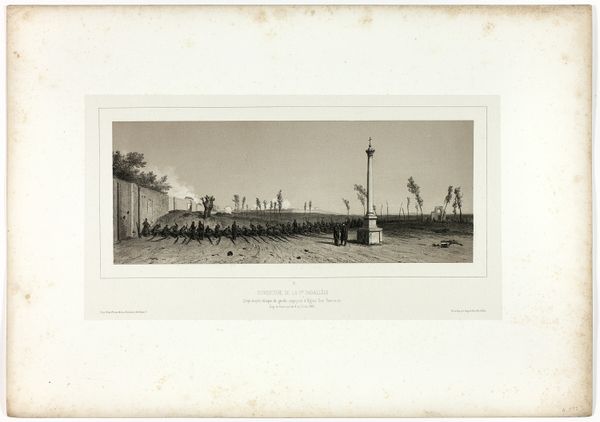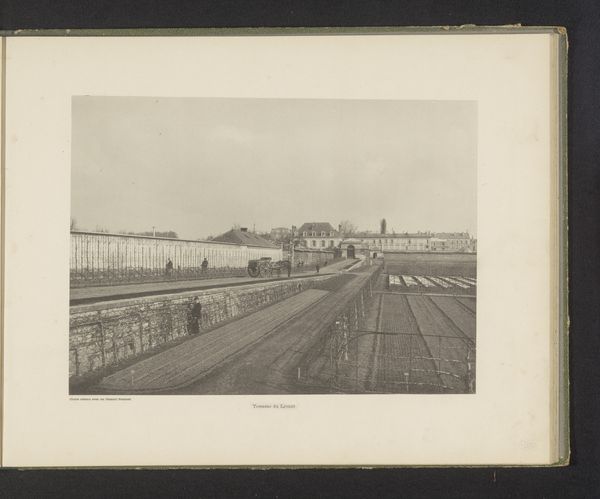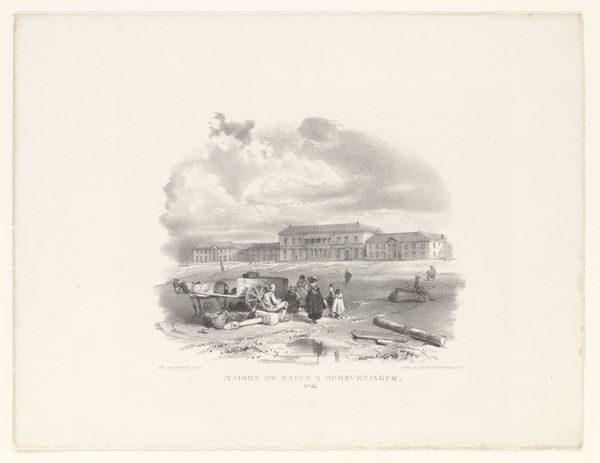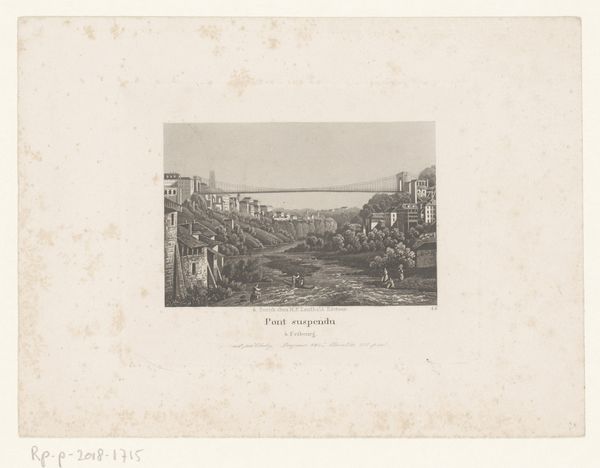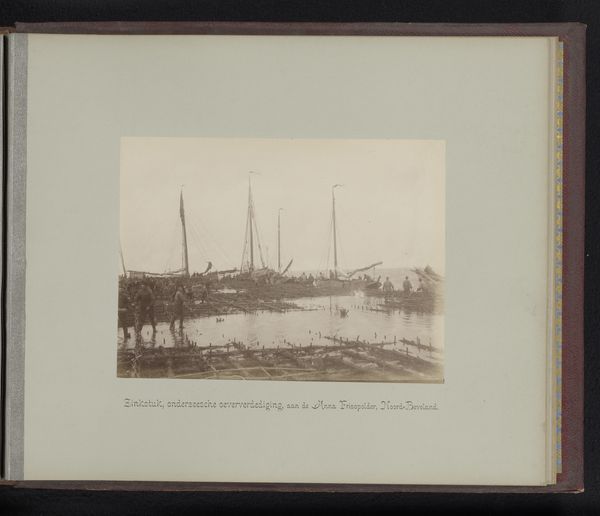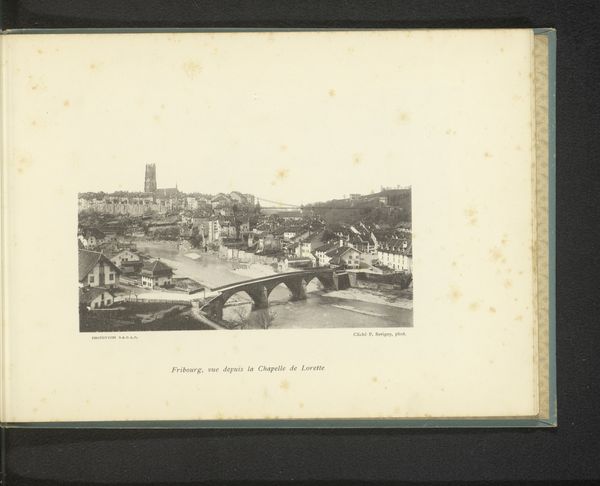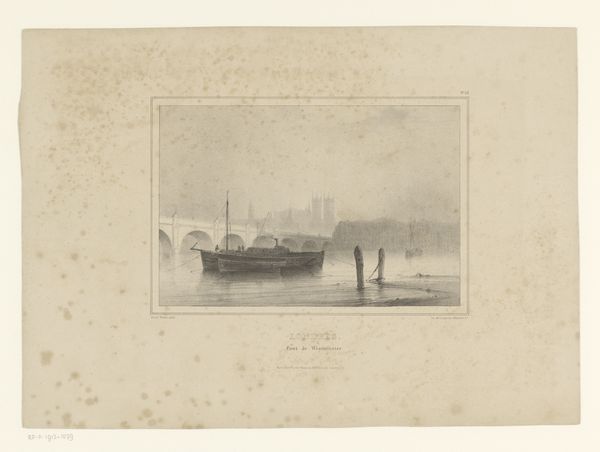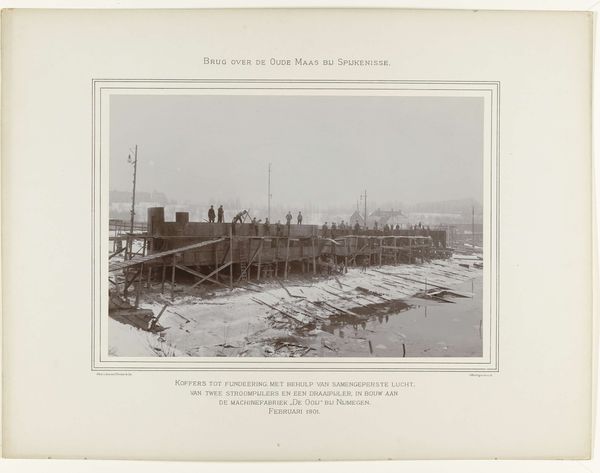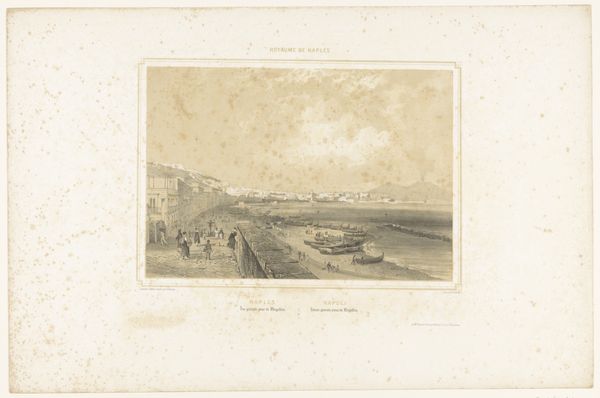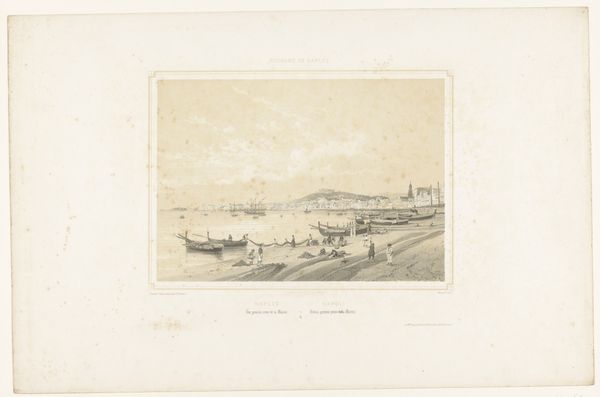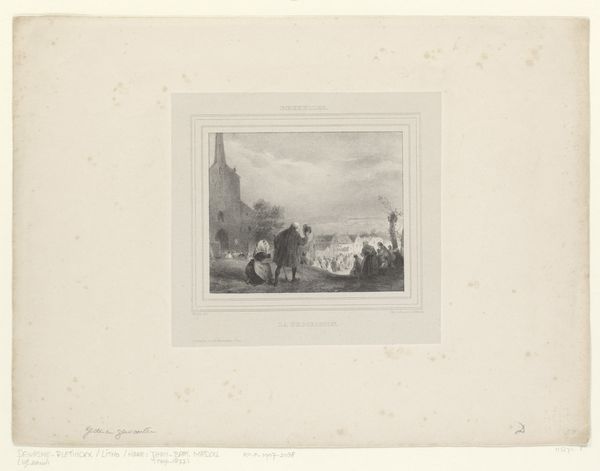
The French Army Landing at Civita-Vecchia, April 25, 1849, from Souvenirs d’Italie: Expédition de Rome 1851
0:00
0:00
drawing, lithograph, print, etching, paper
#
drawing
#
lithograph
# print
#
etching
#
landscape
#
paper
#
history-painting
Dimensions: 164 × 351 mm (image); 242 × 402 mm (primary support); 402 × 569 mm (secondary support
Copyright: Public Domain
Editor: This is "The French Army Landing at Civita-Vecchia, April 25, 1849" by Auguste Raffet, made in 1851. It's a lithograph, etching, and print on paper. The level of detail achieved with these processes is incredible! How should we interpret this scene? Curator: Look closely at the lithographic stone Raffet would have used, Editor. The immense labor involved in creating this image, from quarrying the stone to the application of the greasy crayon and acid, points to the immense resources dedicated to visually representing imperial power. Consider the sheer quantity of prints produced, disseminated widely to shape public opinion. Editor: So, it’s less about the heroic depiction of war itself and more about the industrial scale of propaganda at the time? Curator: Precisely. The choice of lithography, a relatively new and reproducible technique, wasn't arbitrary. It democratized image production but also centralized the narrative control. How does seeing it in this context change your perspective on the artwork? Editor: I guess I hadn’t thought about it as a manufactured image so widely available. It brings a certain calculated feel to it. Were these distributed within the army as well? Curator: Undeniably. The prints served as tangible symbols of French authority, reinforcing their military strength among both the invading forces and the occupied population. Its consumption became a critical facet of this narrative of dominion. Editor: That's a really insightful way to look at it! Thinking about the means of production as being directly tied to the political aims of the artwork shifts the entire picture. Curator: Exactly. The art isn't just *about* the event; it *is* part of the event. Considering production illuminates the social and material context otherwise hidden.
Comments
No comments
Be the first to comment and join the conversation on the ultimate creative platform.
